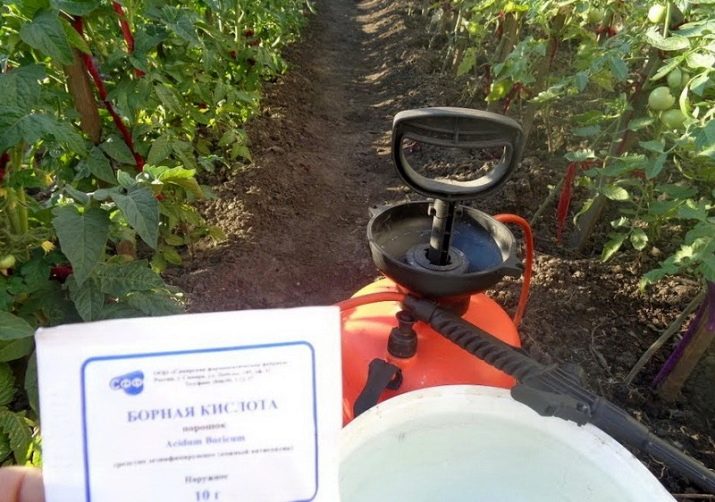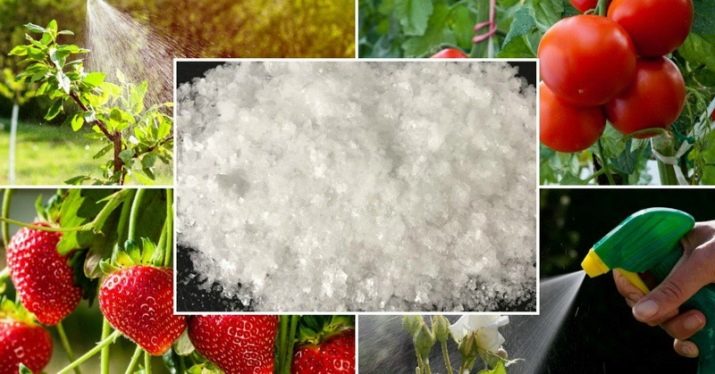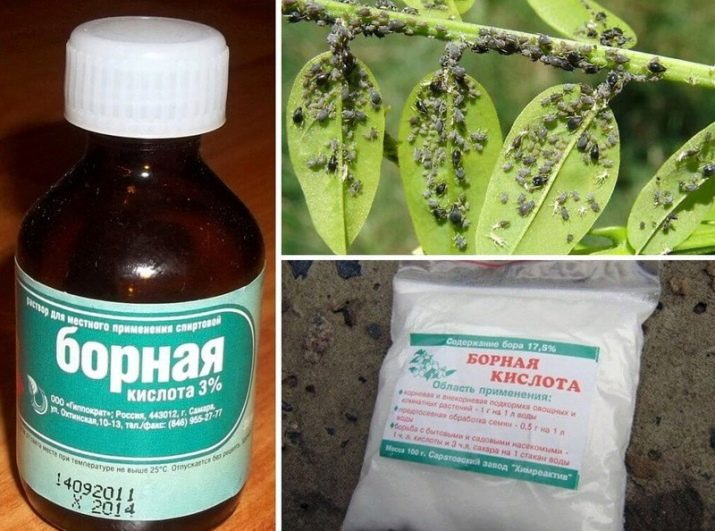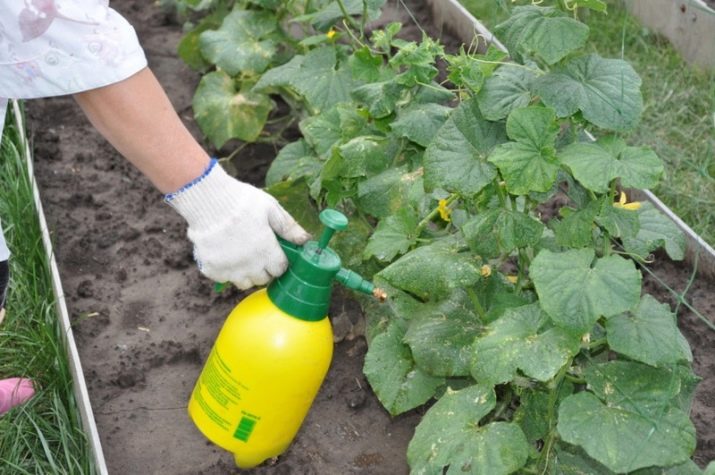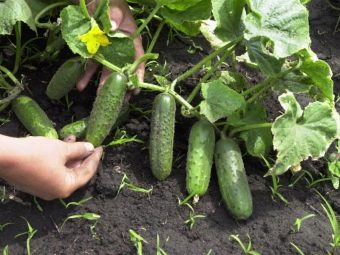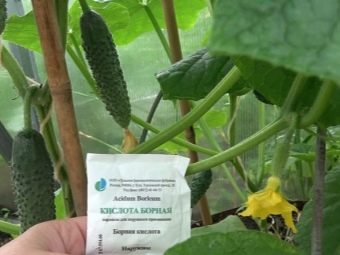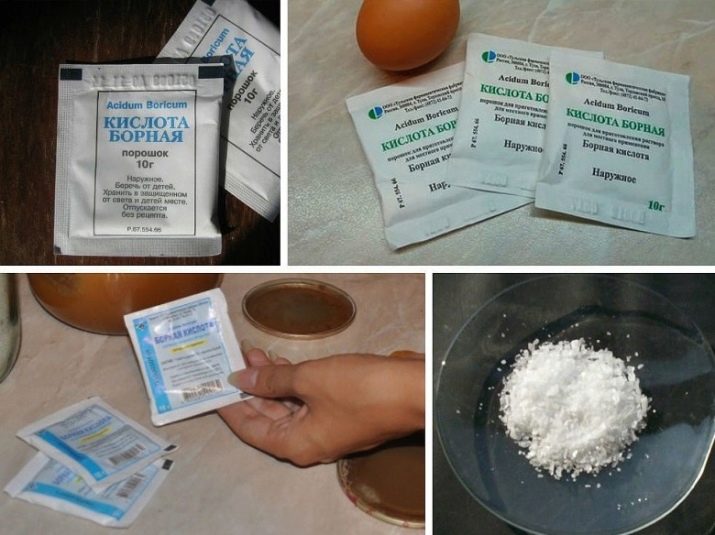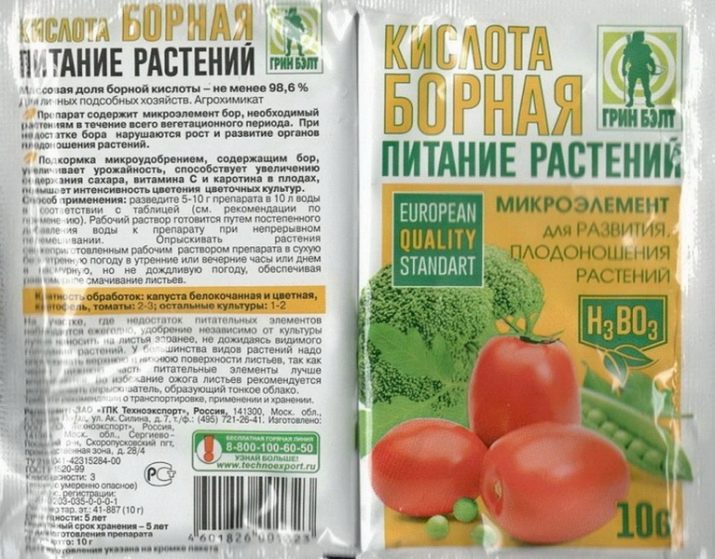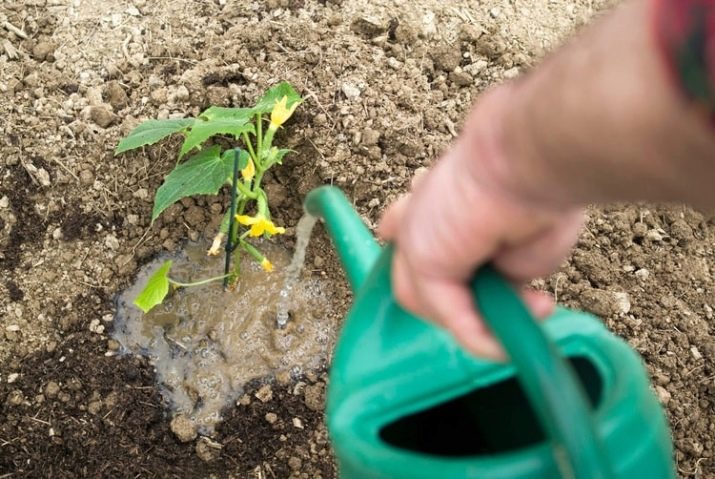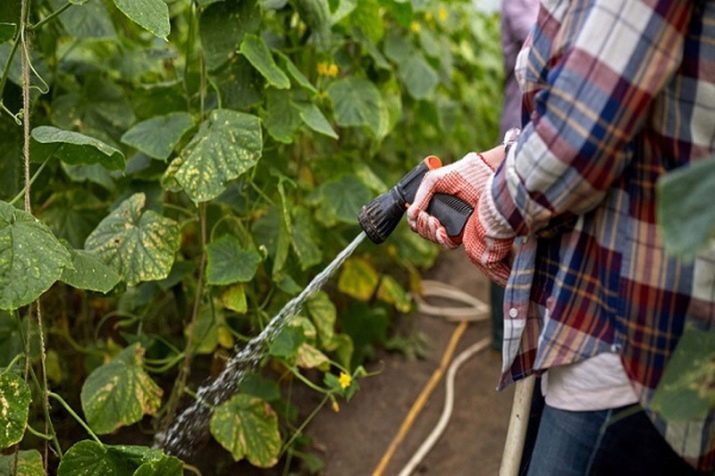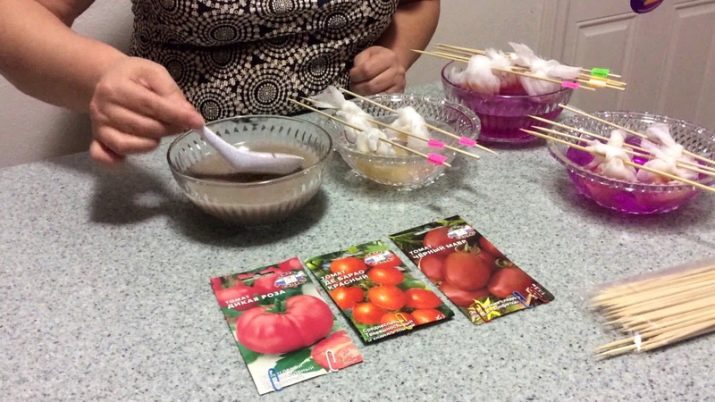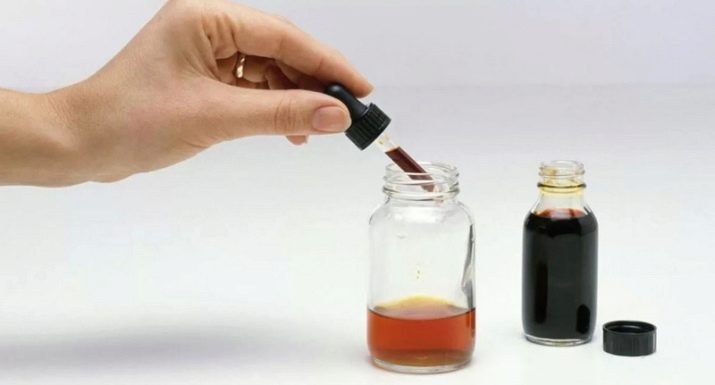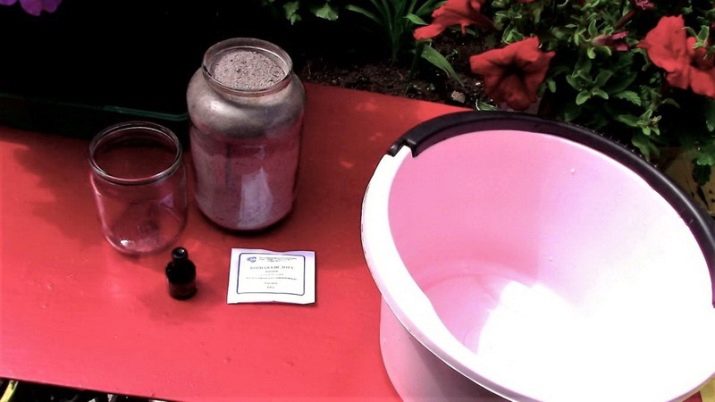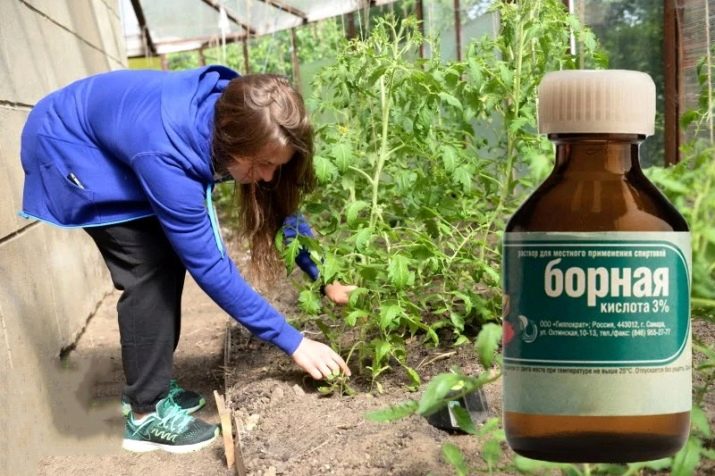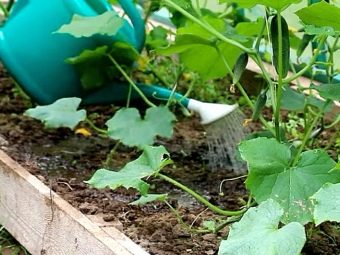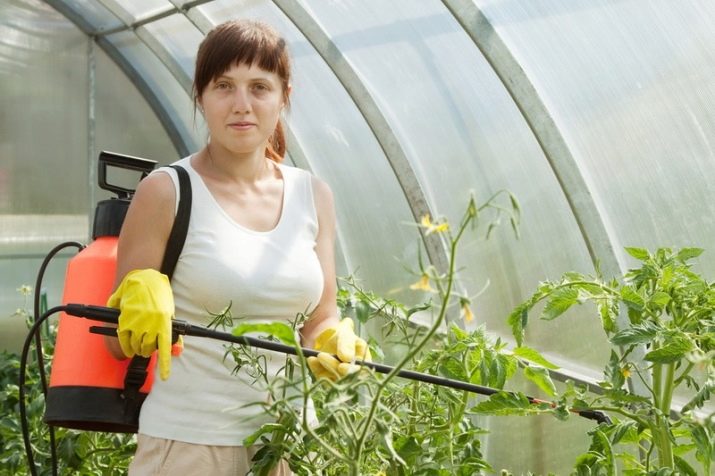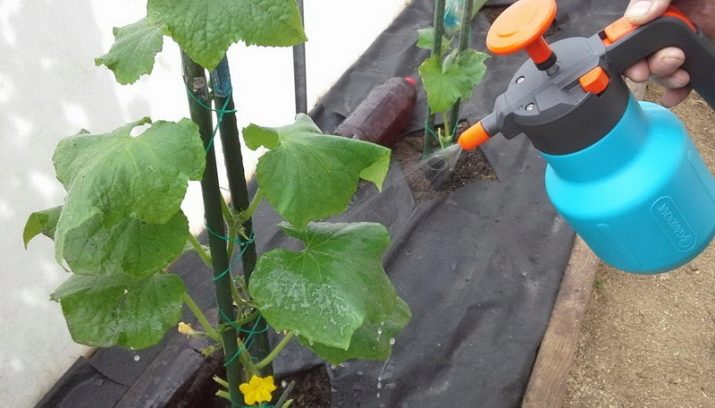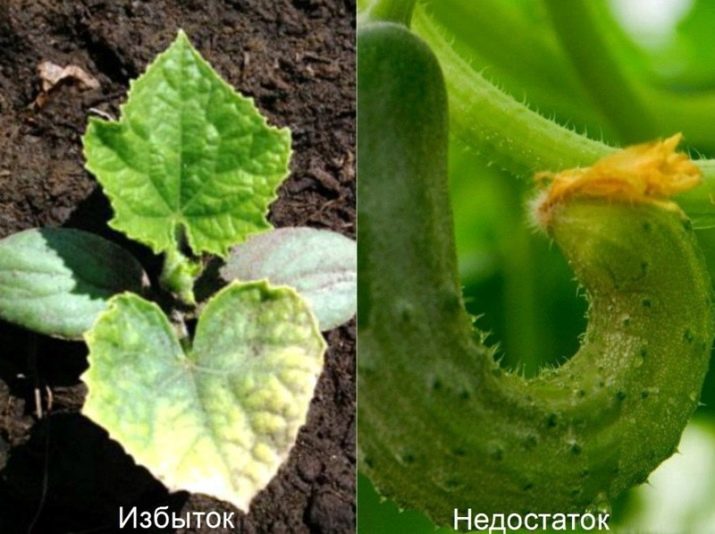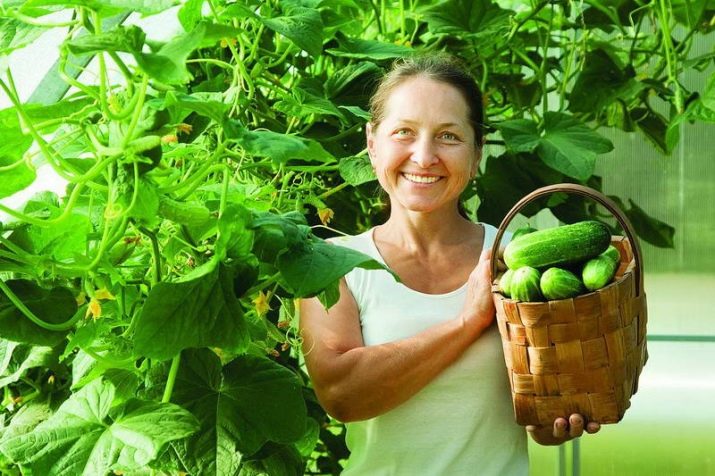Boric acid for cucumbers and tomatoes: preparation, dosage and terms of introduction
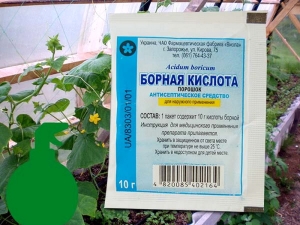
Agree that the most delicious and nutritious vegetables - homemade, grown with great love in the suburban areas and in the gardens. The value of home cucumbers and tomatoes is that they are not overfed with fertilizers and are practically free from nitrates. Contrary to the conventional wisdom, home-grown vegetables can be successfully grown without the use of expensive synthetic dressings. Boric acid is an indispensable assistant to the gardener in obtaining a high yield of tomatoes and cucumbers.
Why apply?
Boron is a mineral fertilizer, but plants need micro doses. This chemical element, along with others, ensures the normal growth and development of vegetable and horticultural crops, participates in metabolic processes, promotes the accumulation of chlorophyll, and stimulates photosynthesis.
Boron superphosphate, borax, boric acid, bormagnium wastes from industry are used as boron-containing fertilizers. These compounds are usually used in combination with other fertilizers. All dressings are absorbed by plants only in the form of liquid solutions.
Crystalline boric acid is a harmless and inexpensive means. The percentage of boron is 17%. Known in medicine as an antiseptic drug, so it can always be purchased at the pharmacy. It is a crystalline powder with no color, odor and taste, non-toxic, with no contact with mucous membranes and skin. It is successfully used as an insecticidal agent to combat harmful insects.
In vegetable production, boric acid has proven to be an indispensable tool in the successful cultivation of home-grown fruits and vegetables. The use of this tool increases the yield, namely:
- stimulates growth, promotes flowering and the appearance of ovaries;
- strengthens the root system;
- increases the tolerance of daily temperature changes;
- strengthens immunity to diseases;
- helps to fight harmful insects;
- improves the appearance and taste of vegetables, contributes to the accumulation of sugar in the fruit;
- extends shelf life.
Processing plants with boron is useful for any soil composition, but it is most needed on sod-podzolic, peat and acidified soils. It is believed that the chernozem does not need additional boron, but the appearance of the first signs of the lack of this substance will prompt the gardener about the advisability of feeding.
Fertilizers applied to the soil are not completely absorbed by plants. Some of them are absorbed by microorganisms, some are washed away or become hard-to-reach plants. Boron remains in the soil for a long time, nourishes it and promotes healthy plant growth.
Long years of studying various vegetable crops and plant nutritional characteristics have provided reliable information on the amount of fertilizer they need for the entire growing season. Well studied the manifestation of the deficiency of each trace. The plant will always tell you about the lack or excess of food before it harms the future harvest. A healthy plant has a healthy appearance.
Study your plants, carefully observe their growth every day, and they themselves will tell you about the deficiency of a particular element in the diet.
Symptoms of boron deficiency
Boron deficiency is immediately noticeable by the appearance of the plant: its leaves lose color, become light green, curl, the growth of the bushes stops, fruiting stops, the plant looks weak and lifeless.
Characteristic signs of a lack of boron in tomatoes and cucumbers:
- wilting points of growth;
- the fragility of the stems;
- weak flowering and dying off of the upper shoots;
- shedding of flowers and ovaries;
- small fruits, insufficient quantity;
- degradation of vegetables.
The appearance of at least two of the indicated signs of boron deficiency is an alarming signal. And in order to preserve the plants and achieve a good harvest of cucumbers and tomatoes, it is necessary to start processing.Experienced gardeners try to prevent the occurrence of such situations and carry out the treatment of plants with boric acid, several times a season.
How to prepare a solution?
Liquid for feeding tomatoes and cucumbers easy to prepare. The main thing is not to forget that an excessive concentration of boron can damage the plant, cause burns to the leaves and the root system. It is equally important to observe the proportions and processing time in order to grow healthy and healthy vegetables, and not to get a herbicidal product. An excess of boron leads to the rapid maturation of fruits that are not stored and very quickly lose their appearance.
Usually the solution is prepared for 10 liters of water. The method of preparation of the mixture is as follows: dilute the required amount of boric acid in 1 liter of hot water (70-80 degrees), then pour the rest of the water. Boric acid does not dissolve in cold water. Let it stand for at least two hours.
The concentration of boric acid in the solution varies from 2 to 10 grams per 10 liters of water, depending on the purpose and type of feeding (see Table 1). Treatment of plants for the prevention of powdery mildew, gray and black rot, late blight is also popular. For this purpose, a boron solution is prepared with a portion of iodine and potassium permanganate.
Typically, boric acid is available in packages of 10 grams. At dilution of 1 packet per 10 l of water we get 1% solution. There is also a pharmaceutical packaging in 1 gram. Therefore, the solution can be prepared without complicated mathematical calculations and weighings. The resulting liquid can be stored for a long time in a closed container, does not lose its useful properties.
Boric acid with brilliant green is a very useful solution for many plants. The benefits of it will certainly be noticeable if the correct dosage is present. You can process plants in different ways: how to spray and feed.
Types of dressings
There are 4 main ways to use a solution of boric acid in order to improve the yield of tomatoes and cucumbers.
Pre-treatment of seed. It is used for disinfection and better germination. The seeds are wrapped in cheesecloth and soaked in a 0.2% solution of boric acid for 12-24 hours. After this treatment, plants grow more resistant to diseases and negative environmental factors: daily temperature drops and drought.
Watering
Watering the soil before planting. Fills the soil with an additional portion of boron, which is stored in the soil for a long time.
Root top dressing (watering). It is carried out exclusively in wet soil in order not to burn the root system. Watered exactly at the root, it is important that the liquid does not fall on the trunk and leaves, so that there are no burns. You can also wet the aisles.
Foliar
Foliar top dressing (spraying) - is carried out using a spray gun in the mode of the smallest spraying until the sheet is completely wet. Do it in dry windless days, morning or evening, when there is no bright sun. Spraying in dry years is most effective.
Recall that boric solutions are safe for humans, do not cause irritation in contact with skin and mucous membranes, non-toxic.
Table 1. Recommended standards for the concentration of boric acid solutions
Processing type | Allowable rate gram / liter | Application features |
seed treatment | 0,2 | wrap in a cloth and soak cucumbers for 12 hours, tomatoes for a day |
soil moistening | 0,2 | enough for processing 10 m2, about 0.5 liters per well |
sprinkling or watering cucumbers | 0,5 | no more than two times per season, with watering - 0.5 liters under each bush in moist soil |
spraying or watering tomatoes | 1,0 | no more than three times per season, with watering - 0.5 liters under a bush in a moist soil |
Good results in germination showed preplant treatment of tomato and cucumber seeds with the following boron mixture:
- bulbous peel extract 0.5 l;
- infusion of wood ash 0.5 liters;
- boric acid 0.2 g;
- soda ash 5 g;
- potassium permanganate 1 year
It is necessary to mix the ingredients in the given order.
In order to prevent the occurrence of diseases - powdery mildew, late blight, bacteriosis, rot - a boron iodine solution with potassium permanganate is used. Here are some recipes for making such mixtures for foliar treatment (spraying).
Cucumbers are very often susceptible to such a disease as powdery mildew. One of the reasons for the emergence of this problem is considered cold nights and sudden changes in temperature, reducing the immunity of plants. To prevent this disease, spray the following mixture: 5 grams of boric acid, 3 grams of potassium permanganate, 25 drops of iodine are taken per 10 liters of water.
To protect against late blight of tomatoes, an infusion of wood ash, iodine and boric acid is used in the following proportion: 10 liters of boric acid water 10 grams, iodine 40 drops, 1.5 liters of wood ash.
Do not forget that boric acid is practically insoluble in cold water. To begin with, it is diluted in a small amount of water heated to 70-80 ° C and only then cold water is added to the required volume.
When to make a means?
In order to avoid overfeeding with boron, it is important to observe the proportions in the preparation of solutions, and the processing time. The basic rule is to carry out the treatment no earlier than 2 weeks after the last feeding.
The long-term practice of using boric acid to improve the quality of yields of cucumbers and tomatoes shows that it is necessary to deposit the product at least three times per season:
- during budding;
- during flowering, but not earlier than 10 days after previous treatment;
- during fruiting.
While the plants are young and only gaining strength, root dressings (watering) are useful. Enough 0.5 liters of solution for each bush. Watering must be done in a moistened soil to prevent burns of the root system. Extremely useful root dressing solution of boric acid seedlings of tomatoes, it will protect them from late blight.
As plants grow, bushes and ovaries form, spraying will be more useful.
Tomatoes are sprayed until the leaf is completely wet, the procedure is repeated when new buds and ovaries appear. And so for the season 3-4 spraying intermittently no more than two weeks.
Irrigation of tomatoes with boric solution at the budding stage provides healthy and strong ovaries. This is explained by the fact that boron is involved in metabolic processes, helps the plant to assimilate other beneficial trace elements, contributes to the accumulation of chlorophyll in the leaves, makes the plant cells durable. The inflorescences do not dry out and do not crumble, and a large, tasty fruit is formed from the ovary. Further fertilizing of tomatoes with boron (but not more than 4 times) stimulates the appearance of a large number of new strong ovaries.
Cucumbers irrigate no more than twice a summer. The first time - when planting seedlings. The second time - with the appearance of the first inflorescences. This boron feed stimulates the appearance of young growth points in cucumbers, protects against ovary damage, improves the quality of vegetables - their appearance and taste, reduces the risk of powdery mildew and bacteriosis.
The Importance of Proper Fertilization
It should be remembered that too high a content of mineral and organic fertilizers can lead to a complete loss of the crop. The introduction of any fertilizer should be carried out very carefully, it is impossible to be guided by simple conjectures and good intentions. When the vegetables die after fertilizing, it does not mean that the fertilizer is poison, this indicates non-compliance with the recommended concentration of the solution.
If an oversight is made, excessive feedings are made, and the plants are destroyed, it is necessary to pour this piece of land with plenty of water. The fertilizer is washed out of the soil to a depth below 20 cm. After planting new plants, excessive watering is also necessary.
The success of applying feedings depends on the correct weighing of fertilizers. At observance of the recommended proportions and terms it is possible to receive a worthy harvest and high quality of the grown up cultures.
The use of boric acid in the cultivation of cucumbers and tomatoes at home (not field) conditions allows to increase the yield of vegetable crops by 20-30%. This is evidenced by the multiple facts and evidence of experienced gardeners. Adhering to simple and clear recommendations, you can achieve high yields and grow delicious vegetables in your garden plot.
To learn how to prepare a solution of boric acid for cucumbers and tomatoes, see the following video.


